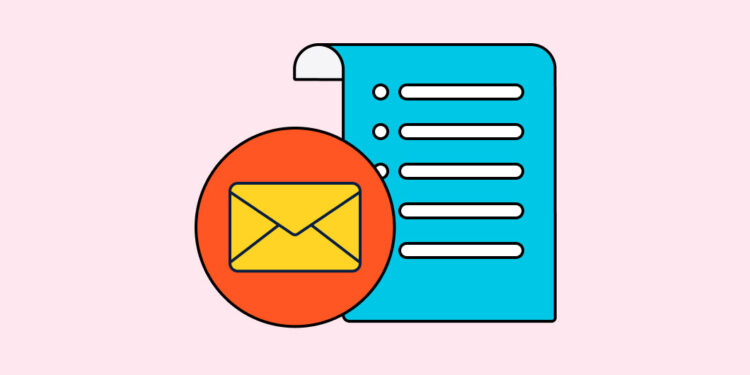Creating a content calendar for your small business email marketing is an essential step toward organizing and streamlining your communication strategy.
A well-planned content calendar helps you maintain consistency, align your emails with your overall marketing goals, and ensure that you are delivering timely and relevant content to your audience. Here’s how you can create an effective content calendar for your small business email marketing.
1. Define Your Goals and Objectives
Before you start planning your content calendar, it’s important to clearly define your goals and objectives. Understanding what you want to achieve with your email marketing will guide your content creation and scheduling.
Consider what your small business needs at this stage. Are you looking to increase sales, build brand awareness, or nurture leads? Each goal will require a different approach in your email content. For example, if your goal is to drive sales, you might focus on promotional emails and product launches. On the other hand, if your goal is to build brand awareness, you might prioritize educational content and storytelling.
2. Identify Key Dates and Events
Once you have your goals in place, identify the key dates and events that will shape your email marketing strategy. This includes holidays, seasonal events, product launches, sales, and any other significant dates relevant to your business.
Mark these dates on your calendar and plan your email campaigns around them. For example, if you run a retail business, you might plan special promotions around Black Friday, Christmas, or the beginning of the summer season. Additionally, consider any industry-specific events or your business’s own milestones, such as anniversaries or new product releases, that could be leveraged for email content.
3. Plan Your Content Themes and Topics
With your goals and key dates identified, the next step is to plan your content themes and topics. This involves deciding what type of content you will send and when.
Start by brainstorming topics that align with your marketing goals and resonate with your audience. For instance, if you’re a fitness brand, you might plan content around health tips, workout routines, and nutrition advice. Group these topics into broader themes that you can rotate throughout the year to keep your content fresh and engaging.
For each month or week, assign specific topics or themes to your emails. This helps ensure that your content is varied and that you’re consistently addressing different aspects of your business and customer needs. For example, you might dedicate one month to focusing on customer success stories and another to introducing new products or services.
4. Schedule Your Emails
Once you have your content themes and topics planned, it’s time to schedule your emails. This involves deciding the frequency of your emails and the exact dates they will be sent.
The frequency of your emails will depend on your audience’s preferences and your business’s capacity. It’s important to find a balance between staying top-of-mind and not overwhelming your subscribers. For most small businesses, sending one to two emails per week is a good starting point. However, this can be adjusted based on your audience’s response and engagement levels.
Use your content calendar to map out each email, including the send date, subject line, and the key message or offer. Make sure to leave some flexibility in your calendar to accommodate any last-minute changes or opportunities that arise.
5. Coordinate with Other Marketing Channels
Your email marketing content should not exist in a vacuum; it should be part of a broader, multi-channel marketing strategy. Coordinate your email content with other marketing efforts, such as social media, blog posts, and paid advertising.
For example, if you’re launching a new product, ensure that your email campaign is aligned with your social media posts, blog content, and any other promotional activities. This consistent messaging across all channels reinforces your message and maximizes the impact of your campaign.
In your content calendar, note how each email aligns with other marketing efforts. This will help you maintain a cohesive strategy and ensure that all your marketing channels are working together to achieve your goals.
6. Monitor and Adjust Your Calendar
Creating a content calendar is not a one-time task; it requires ongoing monitoring and adjustment. Regularly review the performance of your email campaigns to see what’s working and what’s not.
Use analytics to track key metrics such as open rates, click-through rates, and conversions. If certain types of content or specific topics perform particularly well, consider incorporating more of that content into your calendar. Conversely, if something isn’t resonating with your audience, don’t be afraid to pivot and try a new approach.
Your content calendar should be flexible enough to adapt to changes in your business or audience preferences. For example, if you notice that a certain type of email consistently underperforms, you might adjust your strategy to focus more on the content that drives results.
7. Use Tools to Simplify the Process
There are many tools available that can help you create and manage your content calendar more efficiently. Tools like Google Sheets, Trello, or dedicated content calendar software can help you organize your schedule, collaborate with your team, and keep track of deadlines.
Choose a tool that works best for your business and make sure it’s easy to update and accessible to everyone involved in your email marketing efforts. The right tool can make the process of creating and maintaining a content calendar much smoother and more efficient.
Conclusion
Creating a content calendar for your small business email marketing is essential for staying organized, maintaining consistency, and ensuring that your content aligns with your overall marketing strategy. By defining your goals, identifying key dates, planning your content, and scheduling your emails, you can create a roadmap that guides your email marketing efforts throughout the year. Regular monitoring and adjustments will help you refine your strategy and maximize the impact of your campaigns, ultimately driving better results for your small business. Start building your content calendar today to take your email marketing to the next level.








